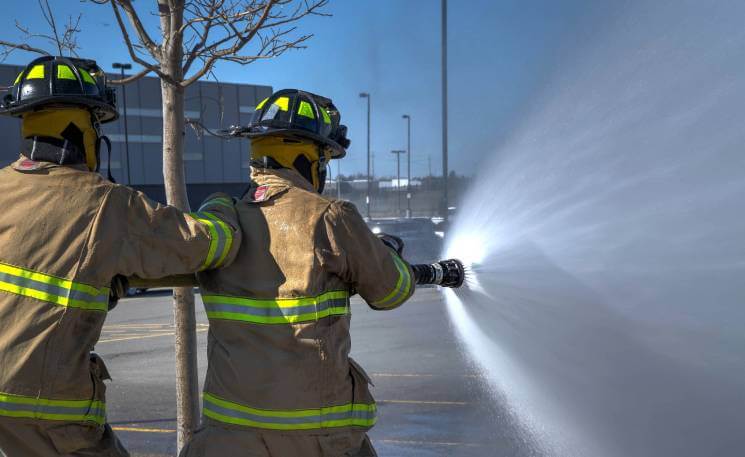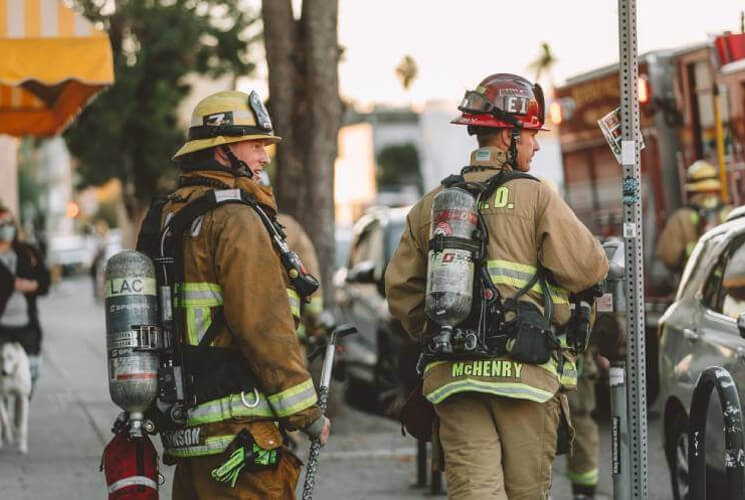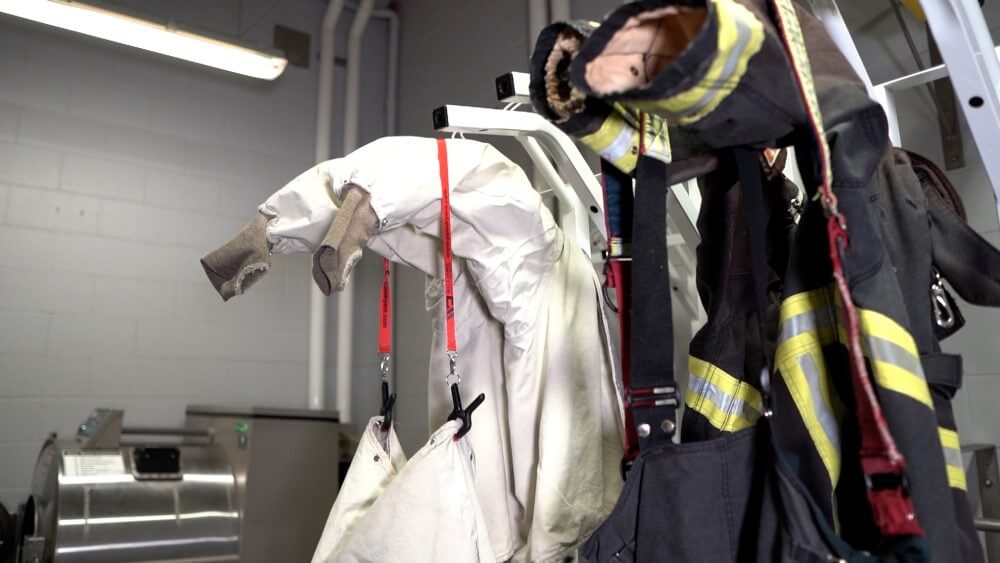Fire Gear Cleaning
Fight back against contaminated turnout gear – and make it last longer – with a regular cleaning schedule.

Williams Direct Dryers’ fire gear dryers are the equipment drying solution emergency response workers have been waiting for. Turnout gear is the most critical component when it comes to protecting firefighters from heat, carcinogens and environmental hazards on the job. Unfortunately, busy schedules do not always allow for regular care and maintenance. This is why it is important for firefighters and emergency response workers to have two types of cleaning routines: one “basic” cleaning that happens after every job and a more “advanced” cleaning that happens later. Here are our fire gear cleaning recommendations to help firefighters across the continent stay healthy – and keep their equipment in working order for years to come.
Why Clean Fire Gear?
Garments that are not cleaned properly can actually be flammable, which poses very immediate risks to firefighters who have little turnaround time between jobs. Soiled garments can also clog moisture barriers and weaken fabric, leaving you vulnerable to both heat and carcinogens. Buildup on fabric can also conceal weaknesses in the trim of turnout gear, making it harder to see when your equipment is compromised.
It is true that longer exposures typically equal higher levels of contamination, but risk is also closely linked to the type of contaminant a person is exposed to. Carbon particles from incomplete combustion actually absorb and hold gases from fire, which makes them far more dangerous than regular carbon. Asbestos, drywall and other particulates can also become lodged in clothing. These embedded contaminants remain on turnout gear until it is cleaned.
Not all harmful particulates are visible. Many are submicron-sized and fit into any porous surface or unprotected gap in clothing. This is why it is so critical to inspect turnout gear after every use and make repairs only as recommended by the manufacturer.
Regular Fire Gear Inspection
It is important to do a thorough inspection of your turnout gear after every use. This is a great time to brush visible contaminants off of your gear and ensure the integrity of all trim, seams and specialty components of your gear. Be sure to carefully check:
- Moisture barriers
- Trim and seam integrity
- Coat/pants overlap
- Shifting of thermal liner
- Reflective trim
- Velcro attachment, functionality
- Liner attachments
- Closures
We also recommend checking the overall fabric of your turnout gear for loss of strength due to environmental factors, such as UV or chemical exposure.

Fire Gear Cleaning Schedule
Turnout gear should be given a basic cleaning after every single use. Brush off debris and lightly scrub or spot clean your gear as needed. At this time, complete a visual inspection of your gear to ensure the integrity of all components.
NFPA 1851, which mandates selection, care and maintenance of fire gear, recommends an advanced inspection and cleaning of gear at least every six months. Recent concerns about carcinogens in turnout gear, however, lead us to recommend a much more frequent cleaning schedule. Our team recommends washing turnout gear once every two weeks.
Both handwashing and front-loading washing machines are recommended for turnout gear. Avoid top-loading washers, which use agitators that could damage sensitive components of your gear.
Do not ever use high-velocity jets such as power washers on your turnout gear. These can damage the material and destroy the integrity of thermal fabric. Similarly, do not use chlorinated products to clean your gear. Do not mix bunker gear with other clothing to avoid cross-contamination.
Drying turnout gear is an equally important part of the cleaning process. While hanging gear out to dry is a popular option, it does leave firefighters with long period of downtime between uses. Williams Direct Dryers is a leading designer and manufacturer of highly efficient fire gear dryers that allow even the busiest of firefighters to get clean, dry equipment quickly. Choose between ambient air for a gentle drying session and warmed air for a faster session. Our dryers are safe for turnout gear and will not compromise the integrity of delicate liners or fasteners. Never hang gear outside to dry, as UV radiation can actually break down the fibers of turnout clothing.

When to Replace Fire Gear
It’s not always easy to see when turnout gear has been compromised. Thermal barriers, for example, can be damaged without any sign of damage to the stitching. The lifespan of protective clothing depends on many different factors, including exposures, frequency of use, and the care and maintenance that has occurred. While the NFPA 1851 recommends mandatory equipment retirement 10 years after the manufacturing date, the lifespan of your equipment could actually be as short as two to three years if it is improperly maintained. Care for your equipment following the manufacturer’s instructions and take note of any changes you see during visual inspections.
Williams Direct Dryers is committed to helping firefighters and emergency response workers everywhere get clean, safe turnout gear without long wait times. Our dryers are compatible with all standards set by the National Fire Protection Association (NFPA) and have been trusted by fire departments across the continent. Learn more about our bunker gear dryers today or contact Williams Direct Dryers for a quote.

